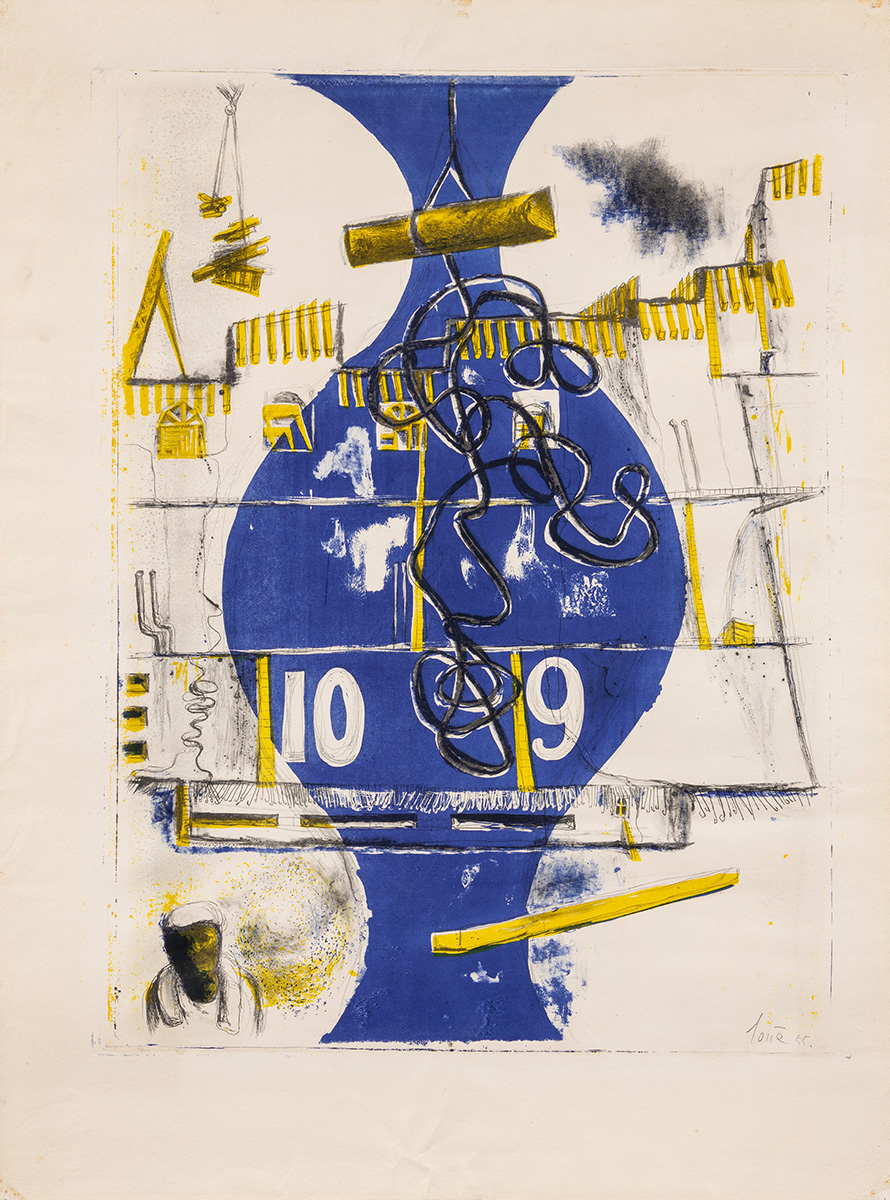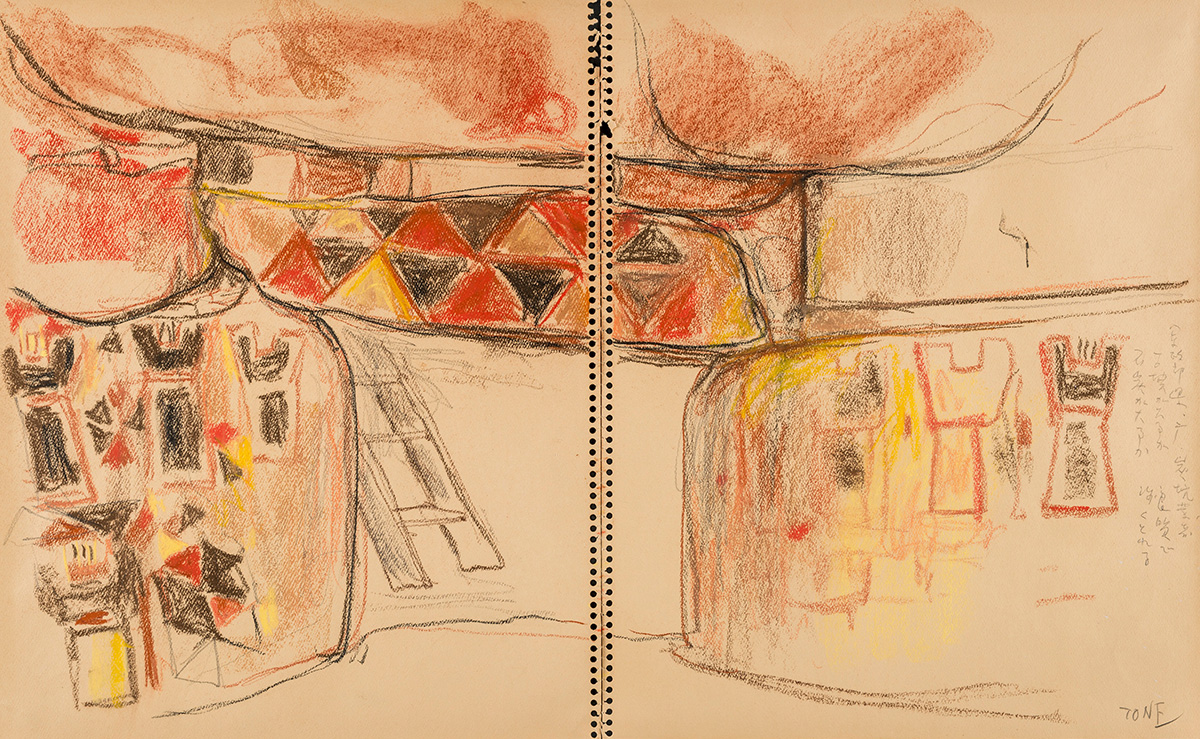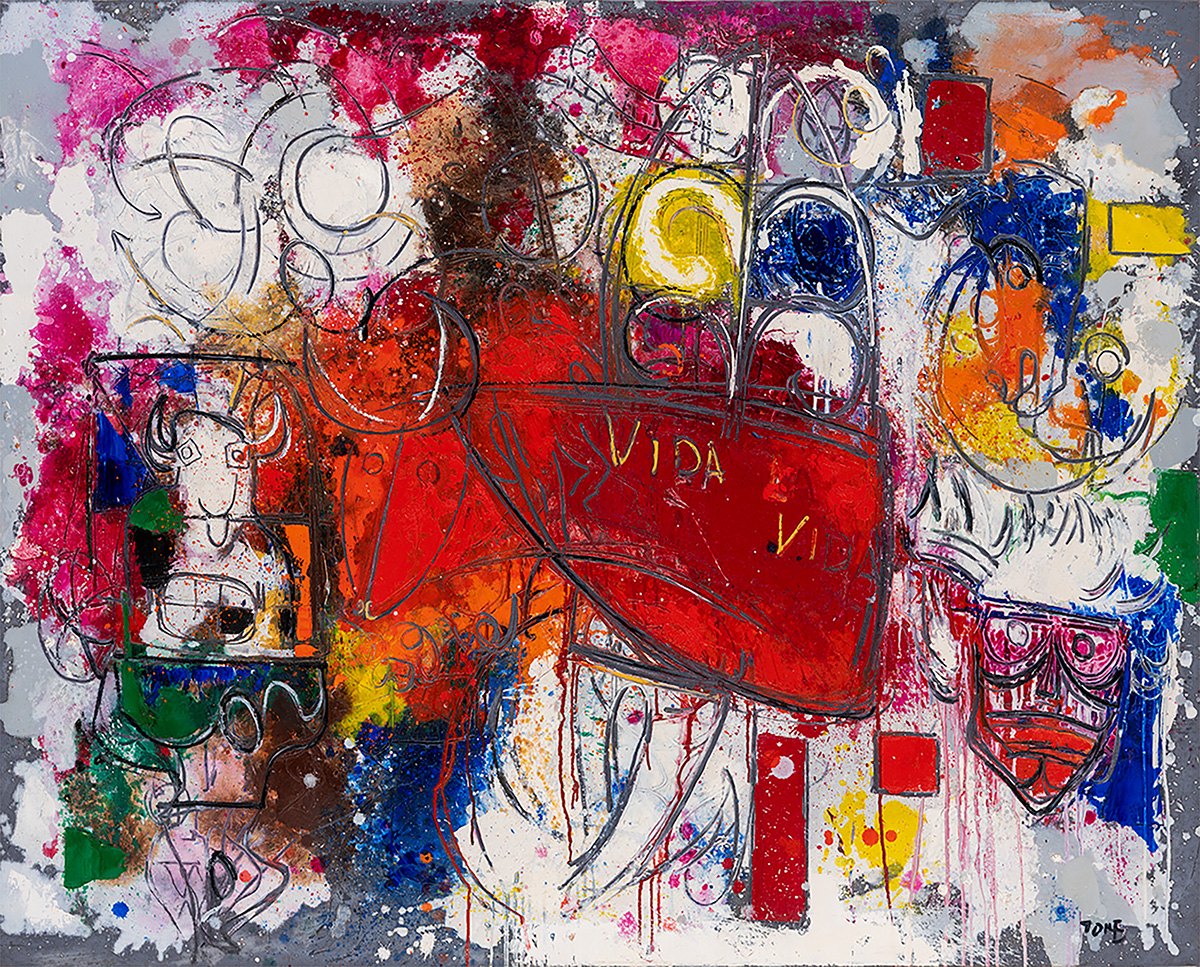NATURE AND THE SOUL: THE JOURNEY OF TONEYAMA KOJIN – SEEING REVERENCE AND CREATIVITY IN OTHER CULTURES
HAPPENINGText: Alma Reyes
Visitors discover his early works that include the famous “Sakuma Dam” series exhibited at the Yomiuri Independent Exhibition in the 1950s. The series, which occupies an entire section in the exhibition, was ignited by the 1954 release of the documentary film on the construction of the dam. After seeing the movie, Toneyama was compelled to capture the postwar reconstruction of Japan. He decided to visit the construction site in Chiba and experience living there among the workers. Some had lost their lives due to the extreme circumstances surrounding the project. The result of his emotional recollection produced provocative abstract images outlining the harsh labor conditions in construction work at that time.

Kojin Toneyama, Dam (A) (from the series Sakuma Dam), 1955, Setagaya Art Museum
The Great Mexican Art Exhibition at the Tokyo National Museum in 1955 served as the catalyst for Toneyama’s untainted passion for Mexico. The silent beauty of the Olmec tradition elevated his incessant desire to penetrate the heart of the Mesoamerican culture. He journeyed across the country frequently and found himself among the breed of other artists, such as Taro Okamoto, Shigeru Mizuki, Tamiji Kitagawa, Yukio Fukazawa, and On Kawara, who were, likewise, fascinated by the rich narrative of Mexican ethnic arts and traditions. Like these expressionists, Toneyama greatly admired Mexican muralists Diego Rivera, David Alfaro Siqueiros, José Clemente Orozco, and Nishizawa. He interpreted visions of Mayan gods, like the rain god Chaac. This is exemplified in the chromatic blue and yellow “Praying for Rain” (1987).

Kojin Toneyama, King’s Tomb/Ozuka Kofun, Keisenmachi, Kaho County, Fukuoka Prefecture, 1973, Arte Toneyama General Incorporated Association Collection
Outside of Mexico, Toneyama traveled extensively in the U.S., Europe, Asia, and the Middle East. He investigated the Altamira cave paintings in Spain and timeless reliefs in the Konark and Khajurāho temples and Ajanta caves in India. In Japan, he trekked to the burial mounds in Kyushu and discovered the popular deer dances in Tohoku. The paintings and pastel works “Circles and a Human Figure,” based on the Chibusan Tomb in Yamaga City, Kumamoto, and “King’s Tomb,” from the Ozuka Tomb in Katsuragawa, Fukuoka, illustrate geometrical shapes and imaginary forms that delineate primeval civilizations.

Kojin Toneyama, Fiesta, 1977, Arte Toneyama General Incorporated Association Collection
Festivals, being a fundamental ingredient of a community’s customs and rituals, stimulated Toneyama’s artistic senses immensely. He was most interested in the Christian Holy Week festivities in Mexico, adorned by colorfully painted bodies and masks, skeletons, paper-maché cows, and devil figures. He visualized them emerging from the darkness of light. The bright and jovial compositions of “Rhythm” (1976), “Fiesta” (1977), and “Festival” (1978) bring sounds and motion to life, fully enveloping a universe of dancing spectra.
A section is devoted to varied portrayals of Don Quixote’s character that Toneyama studied profusely. He envisioned him wandering in a dream world where modern-day anxieties and contradictions are conquered. This perception aligns with the direction of his own art that has sailed freely across multiple spheres of imagination.
Nature and the Soul: The Journey of Toneyama Kojin – Seeing Reverence and Creativity in Other Cultures
Date: September 13th – November 9th, 2025
Opening Hours: 10:00 – 18:00
Closed on Mondays, October 14th and November 4th (Open on October 13th and November 3rd)
Place: Setagaya Art Museum
Address: 1-2 Kinuta Park, Setagaya-ku, Tokyo
Tel: +81 (0)3 3415 6011
https://www.setagayaartmuseum.or.jp/en/
Text: Alma Reyes
Photos: Courtesy of Setagaya Art Museum




